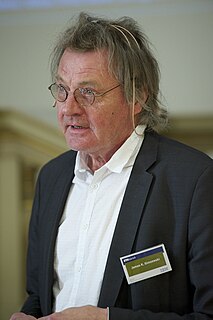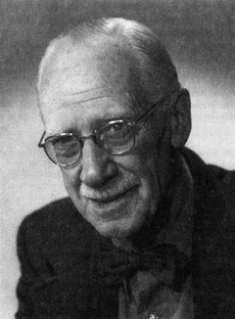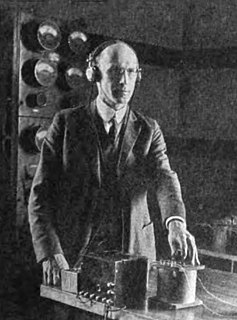
Brian H. Brown is a medical physicist specialising in medical electronics. He is especially well known for his pioneering work with David C. Barber on electrical impedance tomography (EIT). [1] [2] He is also noted for his work on the recording and understanding of the electrical activity of the gut, the analysis of nerve action potentials, the use of electromyography to investigate and identify carriers of muscular dystropy and the development of aids for the profoundly deaf. More recently he has carried out research on the use of Electrical Impedance Spectroscopy to identify early cervical cancer.

Medical physics is, in general, the application of physics concepts, theories, and methods to medicine or healthcare. Medical physics departments may be found in hospitals or universities.

Electrical impedance tomography (EIT) is a noninvasive type of medical imaging in which the electrical conductivity, permittivity, and impedance of a part of the body is inferred from surface electrode measurements and used to form a tomographic image of that part. Electrical conductivity varies considerably among various biological tissues or the movement of fluids and gases within tissues. The majority of EIT systems apply small alternating currents at a single frequency, however, some EIT systems use multiple frequencies to better differentiate between normal and suspected abnormal tissue within the same organ.

Electromyography (EMG) is an electrodiagnostic medicine technique for evaluating and recording the electrical activity produced by skeletal muscles. EMG is performed using an instrument called an electromyograph to produce a record called an electromyogram. An electromyograph detects the electric potential generated by muscle cells when these cells are electrically or neurologically activated. The signals can be analyzed to detect medical abnormalities, activation level, or recruitment order, or to analyze the biomechanics of human or animal movement.
He has contributed to about 290 scientific publications, patents and books and is currently Professor Emeritus at the University of Sheffield.

The University of Sheffield is a public research university in Sheffield, South Yorkshire, England. It received its royal charter in 1905 as successor to the University College of Sheffield, which was established in 1897 by the merger of Sheffield Medical School, Firth College (1879) and Sheffield Technical School (1884).
Brown graduated in Physics from the University of London in 1962 and subsequently completed his PhD in neurophysiology from the University of Sheffield. After graduation, he worked as a Development Engineer with Pye Ltd. in Cambridge and subsequently as a Heath Physicist at Berkeley Nuclear Power Station. Later he was employed for a year as a UN Expert in Medical Electronics in Hyderabad, India. He subsequently was appointed to a chair in Medical Physics in Sheffield. He took partial-retirement in 2002 from his post as Chairman of the Department of Medical Physics and Clinical Engineering at Sheffield Teaching Hospitals and the University of Sheffield.

The University of London is a federal research university located in London, England. As of October 2018, the university contains 18 member institutions, central academic bodies and research institutes. The university has over 52,000 distance learning external students and 161,270 campus-based internal students, making it the largest university by number of students in the United Kingdom.
Neurophysiology is a branch of physiology and neuroscience that is concerned with the study of the functioning of the nervous system. The primary tools of basic neurophysiological research include electrophysiological recordings, such as patch clamp, voltage clamp, extracellular single-unit recording and recording of local field potentials, as well as some of the methods of calcium imaging, optogenetics, and molecular biology.

Pye Ltd was an electronics company founded in 1896 in Cambridge, England, as a manufacturer of scientific instruments. The company merged with EKCO in 1960. Philips of the Netherlands acquired a majority shareholding in 1967, and later gained full ownership.
Brown has won numerous awards and prizes in recognition of his work including the Herman P. Schwan Award for Pioneering Research into Electrical Impedance Tomography [3]
Herman P. Schwan was a biomedical engineer and biophysicist, recognised as the "founding father of biomedical engineering". He was born in Aachen, Germany, and died in his home Radnor, Pennsylvania.





